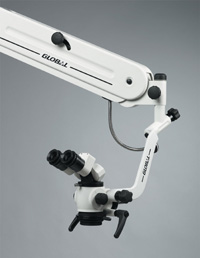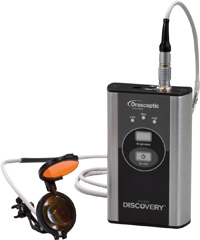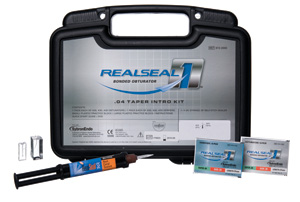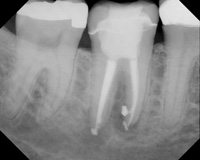Recently I saw Deep Purple in Seattle performing Highway Star and Smoke on the Water from its famous 1972 album Machine Head. The band’s treatment of these songs had quintessence and sounded as good or better than when I was a teenager. For me personally, the music stood the test of time. There is an analogy from my experience in Seattle to endodontic treatment results in that certain endodontic principles stand the test of time and can give results of lasting value.
One such principle that can provide quintessence (long-term endodontic success for both patient and doctor) is to know which teeth to treat, to extract, and/or refer. Said differently, a key ingredient to success is to “Know When to Say ‘When’” and recommend extraction or referral. Sometimes, the most successful “treatment” is that which was never performed by the evaluating doctor. Treating a tooth that should have been extracted or referred seldom, if ever, is a satisfactory experience for those involved. Conversely, wisdom dictates knowing when it is better to extract or refer and give the patient the best long-term options for healing.
What follows are the guidelines I use as a practicing endodontist to determine if a tooth should be treated or extracted, and/or which patients I will refer for intravenous sedation (beyond my capabilities) due to behavioral or management issues. Some decision-making regarding restorability versus extraction is certainly based on knowing which failed procedures can be retrieved via re-treatment. This requires a working knowledge of what is possible with the surgical operating microscope as well as new materials and techniques.
When a patient presents for an initial examination, if the patient questions his or her desire to save the tooth (for any reason) and/or there are restorability issues, once assessed, I will simply ask the patient if he or she wants to save the tooth and is willing to have all the needed postendodontic restorative pro-cedures, most often a buildup and crown. I have observed that many times patients are in favor of endodontic treatment until the needed follow-up restorative care is explained to them. Various personal reasons then may influence the patient’s decision to choose extraction. It goes without saying that even if the root canal is performed to perfection, and then the tooth is later lost due to coronal micro-leakage because it wasn’t re-stored, the procedure is still a failure, and the patient will be unhappy regardless of who is at fault for its lack of restoration.
As part of the usual informed consent, it is important that the patient be given all options, as they might decide for an implant or an extraction, especially if the odds of long-term success are less than ideal. Often, when patients are told that their odds for 5-year success are 50% to 75% for their given clinical situation and are made aware that other options involving extraction may have greater potential for long-term success, they opt for extraction. If the patient makes the best informed choice possible at the time of the initial consultation, long-term success can potentially follow. Anything less is fraught with potential problems. Making the patient central to the treatment decision in-vests the patient in the process and creates trust.
BEHAVIORAL ISSUES
If there are any reasons why I cannot establish rapport, trust, and cooperation with a patient before treatment is started, I will not treat them. Reasons for feeling that such trust cannot be established might range from simply a “bad feeling” to something very tangible. Tangible reasons might be the patient who wants to modify treatment in an inappropriate manner. For example, the patient may ask me to use an herbal remedy as the sealer or use an unapproved filling material. In addition, some patients may question virtually every-thing they are told, criticize many or all of the doctors who have treated them previously, and blame their dental issues on others unreasonably. For me, it is difficult to establish trust with such an individual and yet, quite possibly, another doctor may be able to do so. Referral is indicated.
CLINICAL EXAMINATION
A thorough clinical examination both of objective and subjective symptoms is essential prior to treatment. While a discussion of all the information-gathering techniques for a clinical endodontic examination is beyond the scope of this paper, there are several often-overlooked pieces to such an examination that can make a significant difference to the restorability of a tooth and advisability of treatment. Specifically, multiple radiographic angles taken pre-operatively should be examined along the entire attachment apparatus to evaluate the tooth for vertical root fractures and lesions of endodontic origin that are not coincident to the apex. As an aside, lesions of endodontic origin can be found anywhere along the attachment apparatus, and the presence of such lateral root lesions can give strong clues to canal anatomy. In addition, carefully probing every tooth to be treated as well as inspecting the gingival tissue around the tooth for fistulas can go far in finding vertical root fractures that might not otherwise be immediately apparent.
MARGINAL RESTORABILITY
Obviously, teeth have various levels of restorability, from excellent to hopeless and much in between. Teeth with guarded to poor prognoses may be due to the following: mucogingival defects, bone loss, mobility, occlusal dysfunction, coronal fractures, possible vertical fractures, extensive restoration, caries of all types (especially cervical class V lesions), and a lack of biologic width amongst other clinical entities. In addition, it is important to realize that in order to determine if these clinical entities are either restorable or not, a periodontal consultation is often advised. Periodontal therapies needed to save a given tooth might include the following: crown lengthening, root amputations, bone re-generative procedures, etc. It may be advisable in a given clinical situation to perform a pulpotomy for pain relief and to obtain a periodontal consultation prior to the final endodontic procedure. As part of the initial consent, it is critical that the patient be informed exactly which risk factors are present and what additional periodontal therapy (in addition to the root canal, buildup, and crown) will be necessary for restoring the tooth (Figures 1 to 3).
 |
 |
| Figure 1. Furcal bone loss is indicative of a furcal floor fracture and a possible indication for extraction. | Figure 2. Distal resorption makes restorability of this tooth questionable. |
 |
| Figure 3. Degree of bone loss makes periodontal prognosis very poor. Tooth was extracted despite the indication for endodontic therapy. |
RISK ASSESSMENT
Risk factors that complicate endodontic treatment and restorability must be assessed and discussed
in detail with the patient prior to initiation of treatment. Assessment of these risk factors should ascertain whether treatment is contraindicated for the particular tooth or if they advocate for referral to someone more qualified to achieve an excellent result. Intuitively, it seems obvious that the more risk factors that are present predisposing the tooth to iatrogenic outcomes, the greater the chance that the tooth is either not restorable and/or that referral and consultation with other specialists might be indicated. Risk factors for first-time treatment include those mentioned above under restorability. In cases of endodontic re-treatment, in addition to the risk factors present with first-time treatment, all manners of iatrogenic entities (perforations, ledges, separated files, etc) can be present, for which resolution must be anticipated in order to achieve the best possible results.
In addition, carrier-based failures may pose special re-treatment considerations that are not present with other warm gutta-percha vertical compaction techniques (such as the continuous wave of condensation using the System B heat source [SybronEndo], which does not leave a carrier). Such carrier-based failures may be time intensive with regard to dissolving the gutta-percha around the carrier if manufacturer recommended re-treatment techniques are not successful (Figures 4 to 6)
 |
 |
| Figure 4. Removal of the silver cones and establishment of canal patency are the limiting factors in re-treating this lower molar. | Figure 5. The placement of the post in this upper lateral incisor cannot be repaired, and extraction is indicated. |
 |
| Figure 6. Lack of bone support and poor crown-to-root ratio make re-treatment of this upper bicuspid contraindicated. |
WHEN TO REFER
A separate article could be written on the subject of endodontic and dental referral, but ultimately, referral should be dictated by what is in the patient’s best interest and not our own. Simply put, if the patient was your mother, would you be the person best skilled to handle the given endodontic problem at hand?
SUMMARY
Ultimately, this article is a challenge to assess preoperatively both the patient and tooth and ask several important questions before a handpiece is ever picked up:
(1) Can this tooth be re-stored?
(2) Should this tooth be restored?
(3) Does the patient want to save the tooth, and will the patient have the needed follow-up treatment?
(4) If this tooth cannot be restored as it is now, can it be made restorable through periodontal procedures?
(5) If the tooth is restorable and the patient was my mother, am I the doctor to bring about the best long-term prognosis for the tooth endodontically?
(6) Can this patient tolerate the contemplated treatment physically, mentally, emotionally, and financially?
The long-term goal for the patient should be the maintenance of the tooth in asymptomatic function. In 30 years, like the Deep Purple rendition of Highway Star and Smoke on the Water, which had appeal to me in Seattle, someone will hopefully look at a given root canal and say that the treatment was originally performed well, for the right reasons, and stood the test of time.
Dr. Mounce is in private endodontic practice in Portland, Ore. He lectures worldwide and has written numerous articles for journals including Dentistry Today and the Journal of Endodontics. He can be reached at lineker@aol.com.


